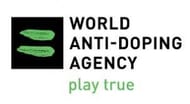By the mid-1960s most of the top-ranking throwers began using anabolic steroids, including Randy Matson, the 1968 Olympic champion and world-record holder in shot put.
Cycling was undoubtedly the crucial area which saw an explosion of drug usage. Ludwig Prokop (1970: 46) describes cycling competitions of that era as ‘special hotbeds of doping’.
In the 1960 Rome Olympic Games, Knud Jensen, a 23-year-old Danish cyclist, collapsed during competition and died, and later in the 1967 Tour de France, English cyclist Tom Simpson, 29, met with a similar fate.
After the reunification of Germany in 1990, Professor Werner Franke and Brigitte Berendonk’s revelation about the East German Stasi program shocked the world:
“Top-secret doctoral theses, scientific reports, progress reports of grants, proceedings of symposiums of experts, and reports of physicians and scientists who served as unofficial collaborators for the Ministry of State Security (‘Stasi’) reveal that from 1966 on, hundreds of physicians and scientists, including top-ranking professors, performed doping research and administered prescription drugs as well as unapproved experimental drug preparations. Several thousand athletes were treated with androgens every year, including minors of each sex. Special emphasis was placed on administering androgens to women and adolescent girls because the practice proved to be particularly effective for sport performance.
“This Communist state-sponsored program was not only a highly organized assault on the rules of sport; more importantly, it also violated scientific and medical ethics. Girls and boys 14 years of age or younger were given anabolic steroids and other drugs – and often neither they nor their parents were informed.”
Following this incident, such national programs were also found to have been prevalent in the Soviet Union and Soviet bloc countries.
Similarly, the Chinese established the National Research Institute, a high performance sport science laboratory quite similar to the GDR’s Research Institute for Physical Culture and Sports in Leipzig (Hoberman & Todd, 1992).
The usage of drugs to enhance performance had infiltrated every sport by now, through such programs.
Anti-doping over the years
The International Amateur Athletic Federation (IAAF) in 1928 was the first to implement anti-doping measures by banning the use of stimulating substances. Many other international federations followed along the same lines, but failed to be effective due to the lack of tests.
The death of Danish cyclist Knud Enemark Jensen during competition at the Olympic Games in Rome 1960 (the autopsy revealed traces of amphetamine) paved the way for stricter anti-doping policies.
In 1966 the UCI (cycling) and FIFA (football) were among the first international federations to introduce doping tests in their respective World Championships. In the next year the International Olympic Committee (IOC) instituted its Medical Commission, which released a list of prohibited substances. Drug tests were first introduced at the Olympic Winter Games in Grenoble and at the Olympic Games in Mexico in 1968.
By the 1990s, there was an unmistakable relation between the more effective tests and the sharp decline in the performance of athletes.
The World Anti-Doping Agency (WADA), a private non-governmental organization, was established on November 10, 1999 to formulate and implement anti-doping devices across countries and across sports.
Following the establishment of WADA, one of the most famous doping scandals was that of Bay Area Laboratory Co-Operative, or BALCO, founded by Victor Conte. He created designer steroids which were undetectable by the drug tests prevalent in those times. This revelation led to the prosecution of athletes including Olympians such as Tim Montgomery (the world record holder in the 100m sprint at the time) and Marion Jones, football players such as Bill Romanowski, and baseball stars such as Barry Bonds, Jason Giambi and Gary Sheffield, all of whom were found related to BALCO.
Conclusion
Though the doping-tests are far more advanced today, it would be naive to believe that drug usage among athletes is completely absent. Performance enhancers will always be perceived as the trump card which enables the sportsperson to cement a place in the global competitive sphere. Numerous athletes still continue to fail doping tests, thus validating the fact that this old enemy which has always threatened the “integrity of sports”, is an inevitable force governing modern sports.


